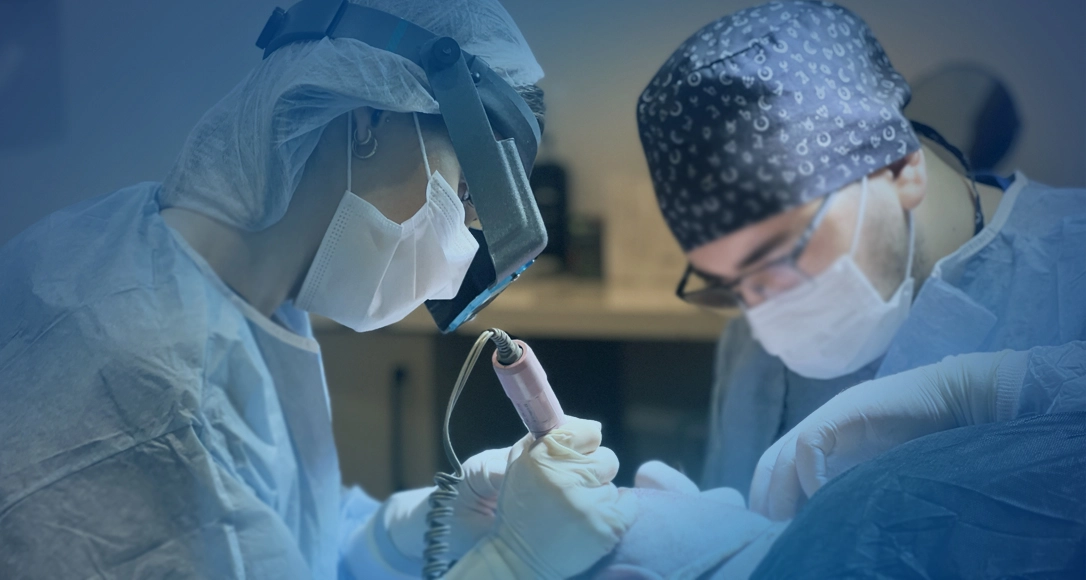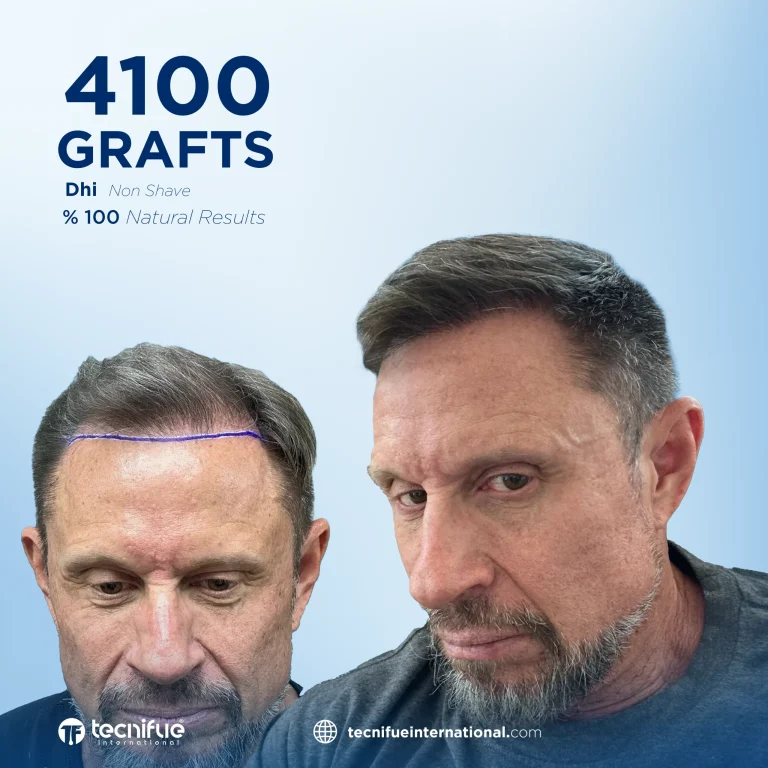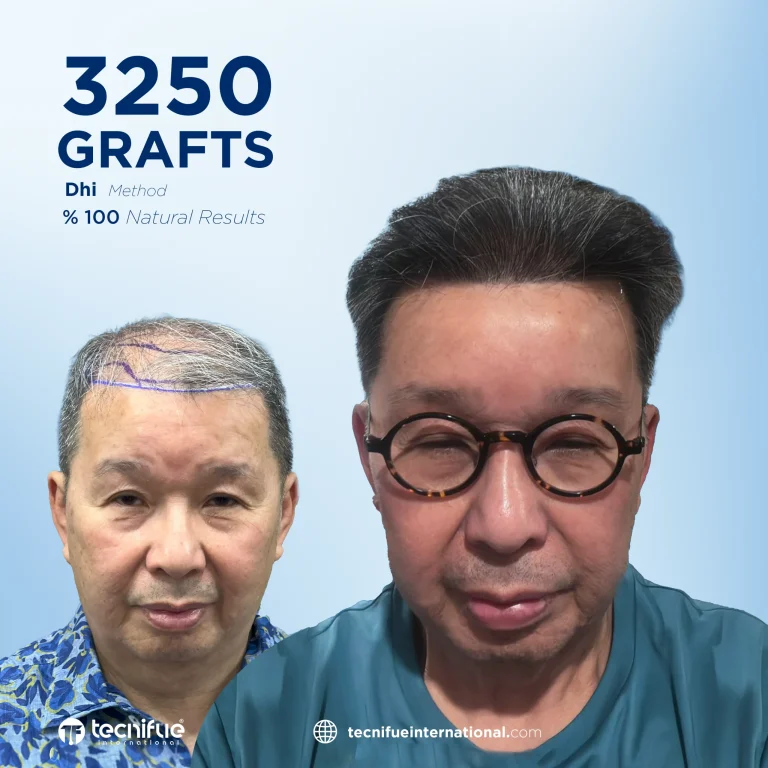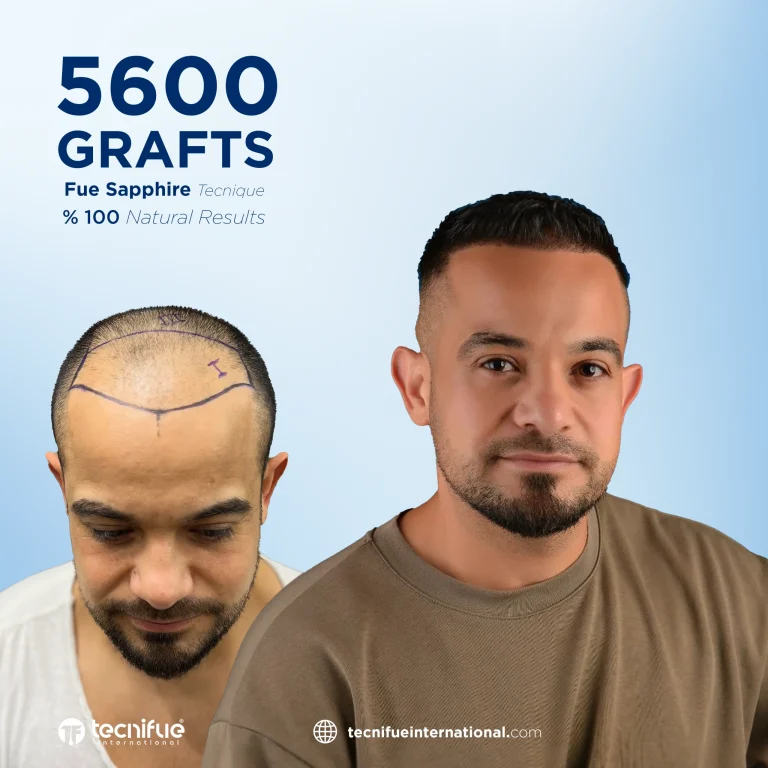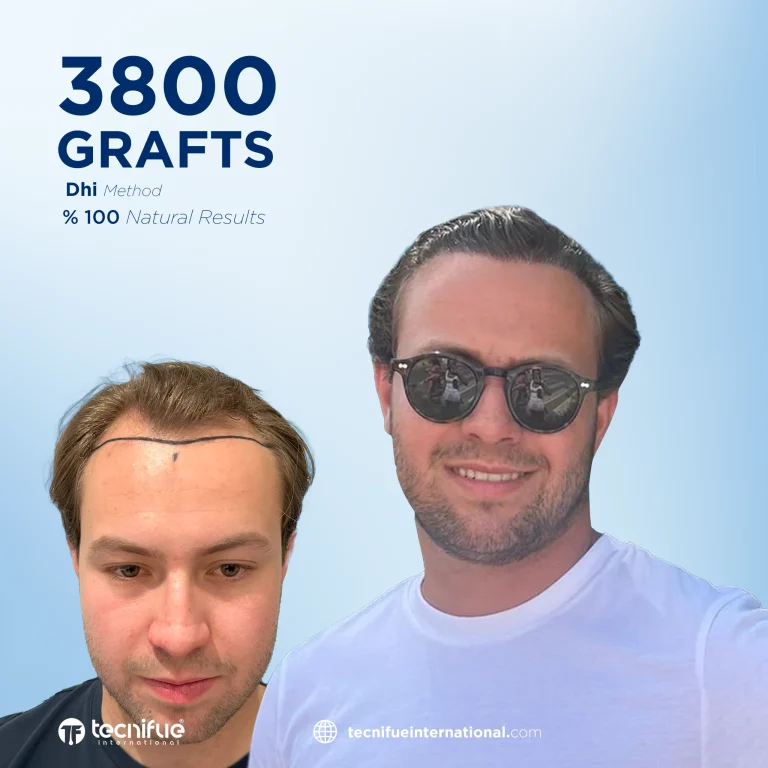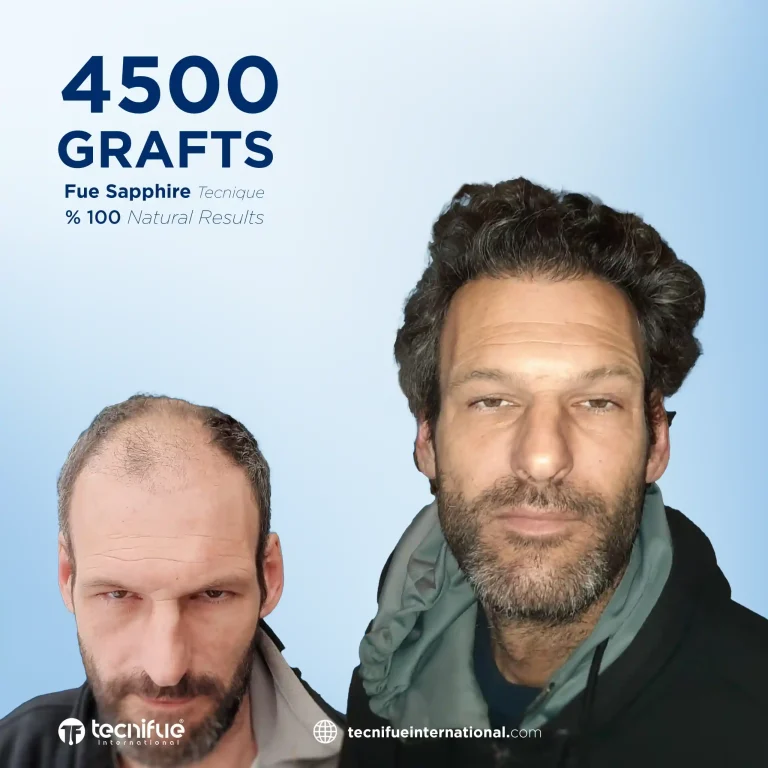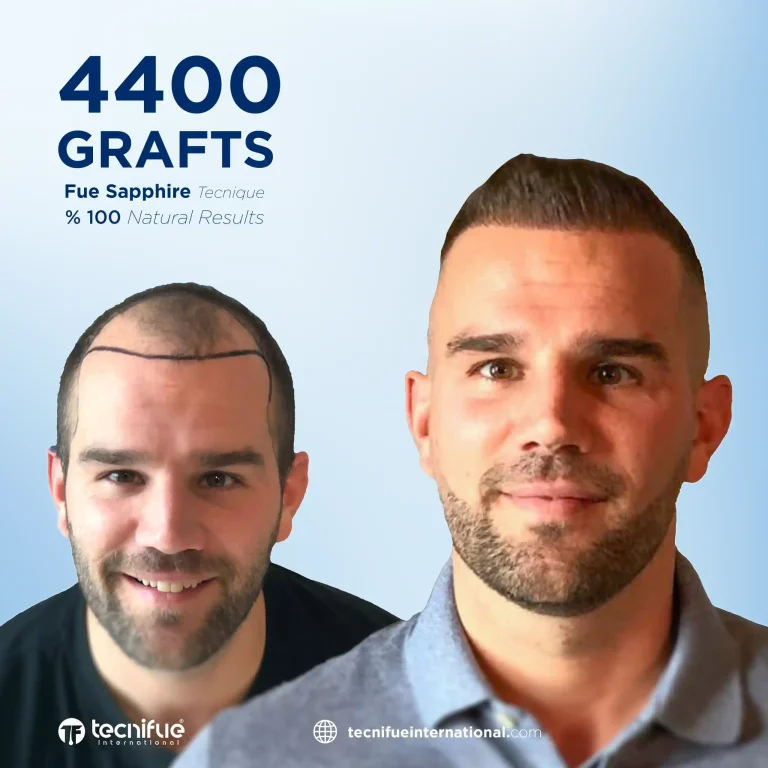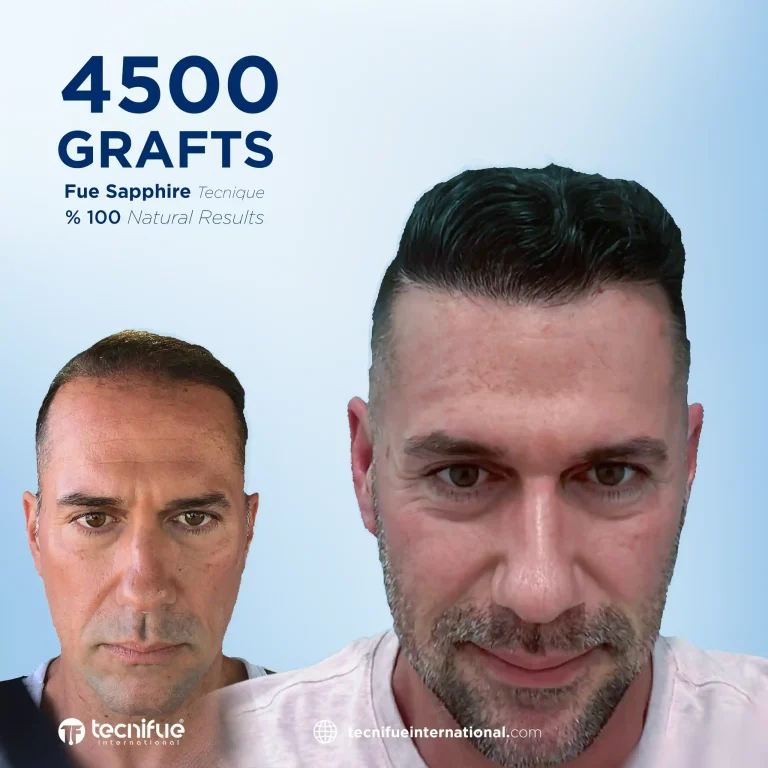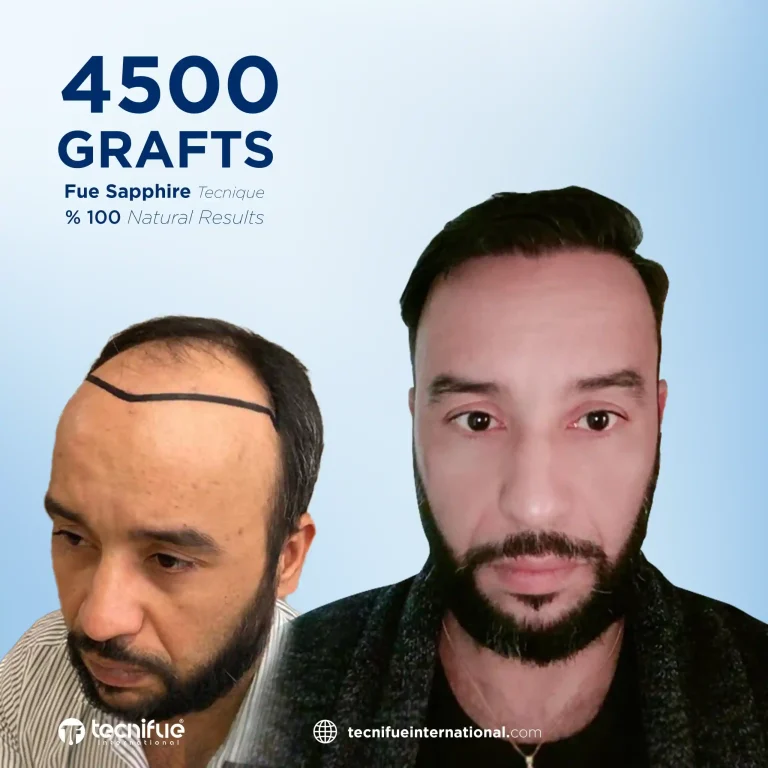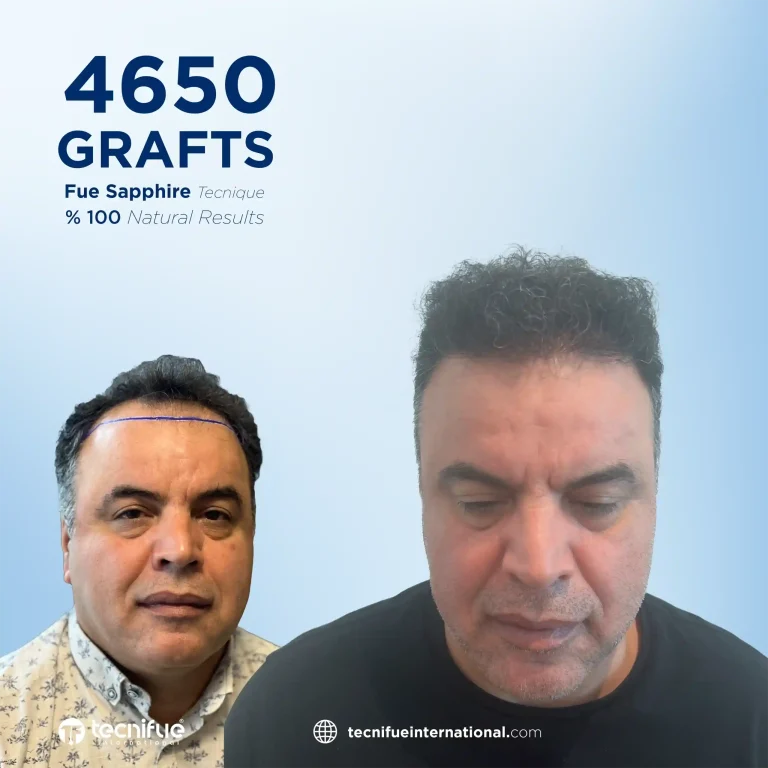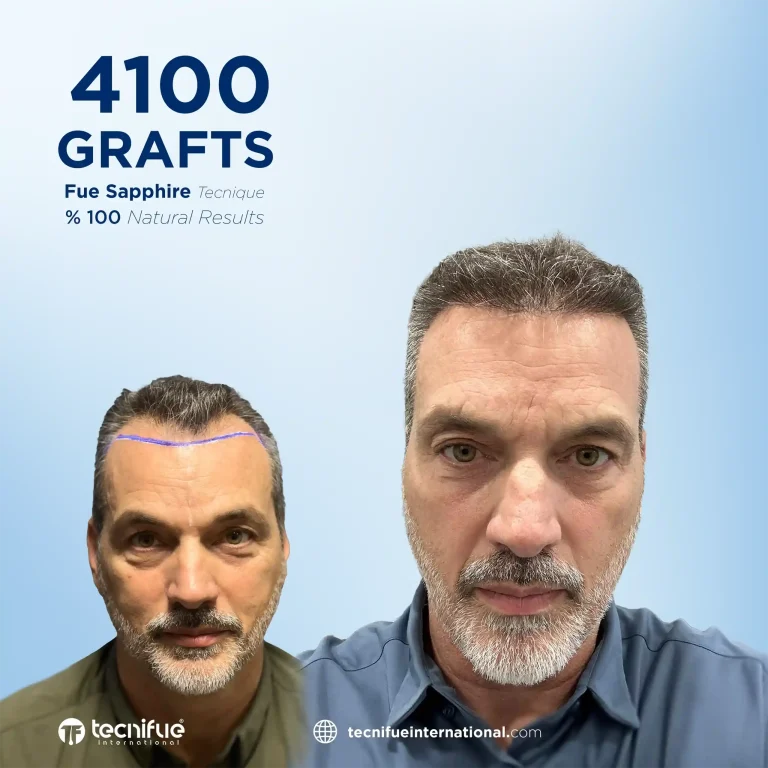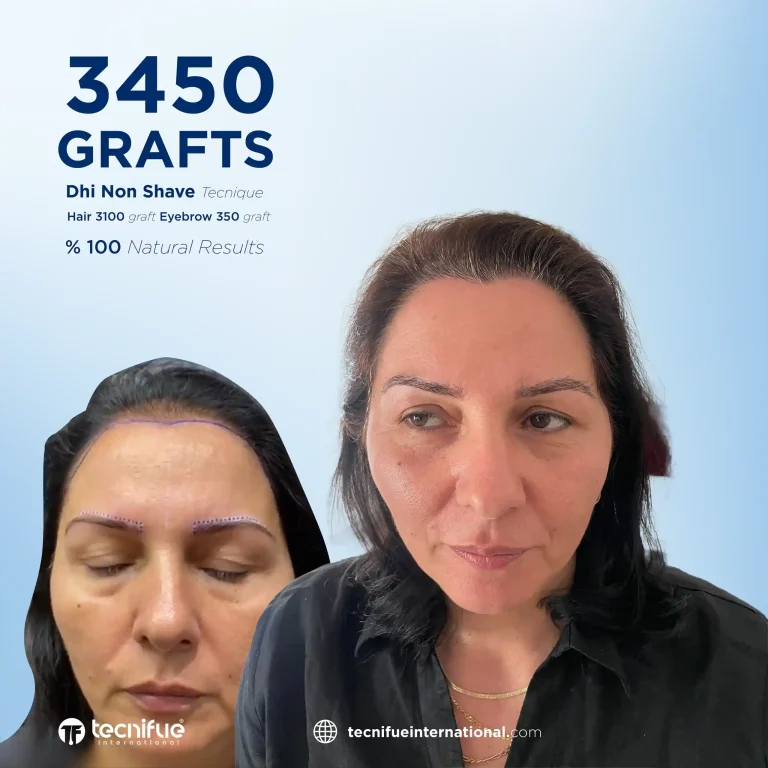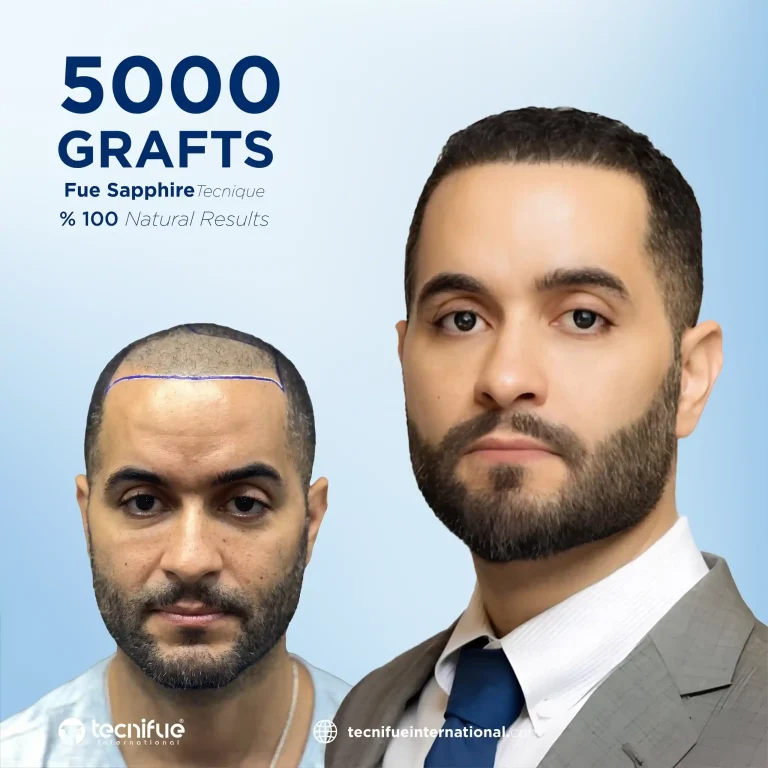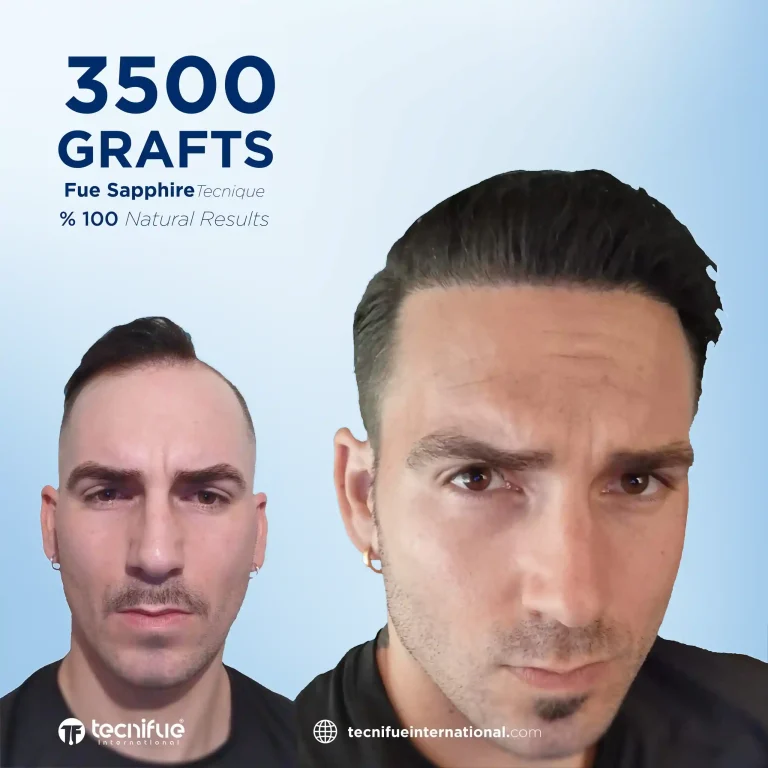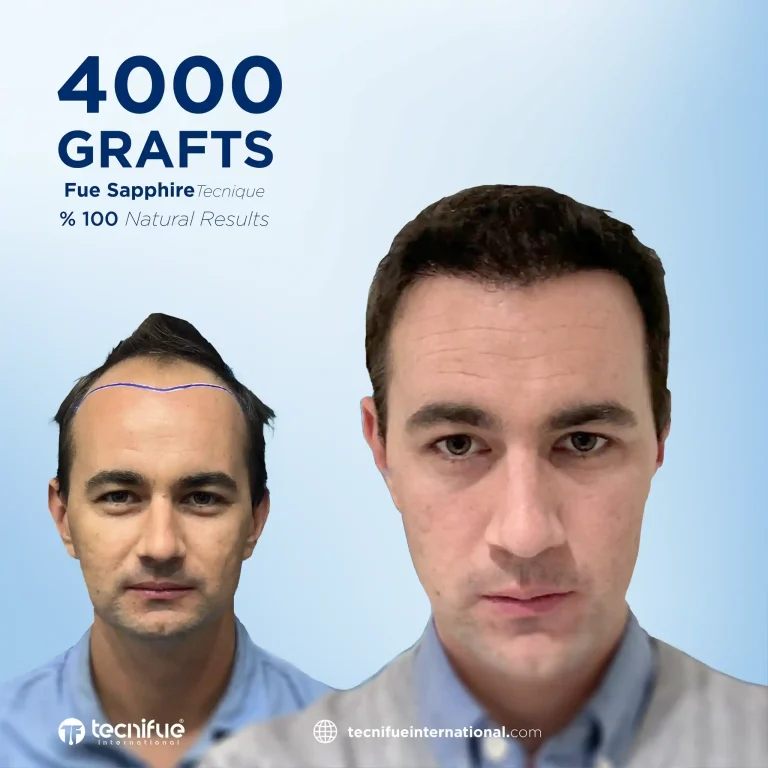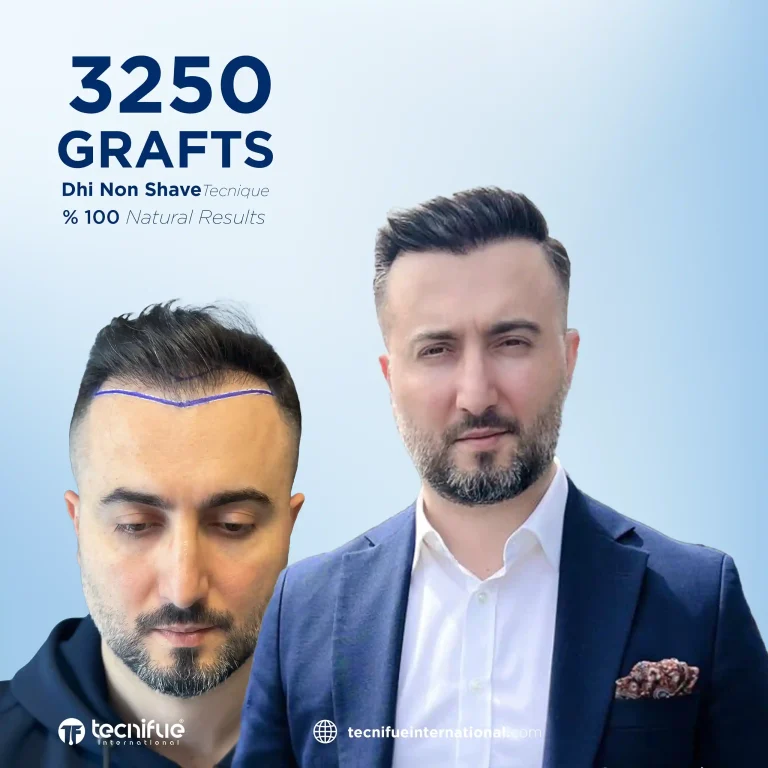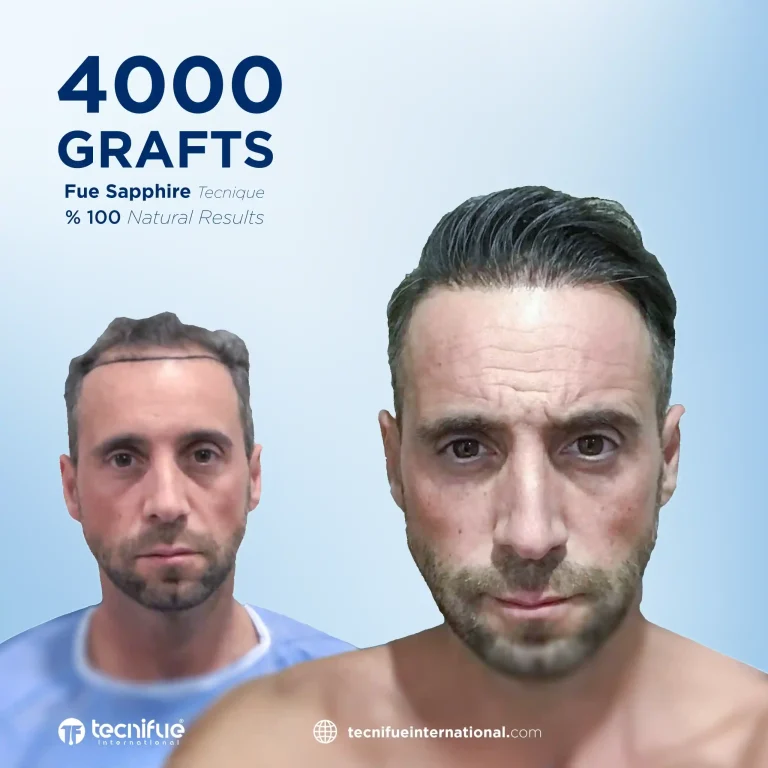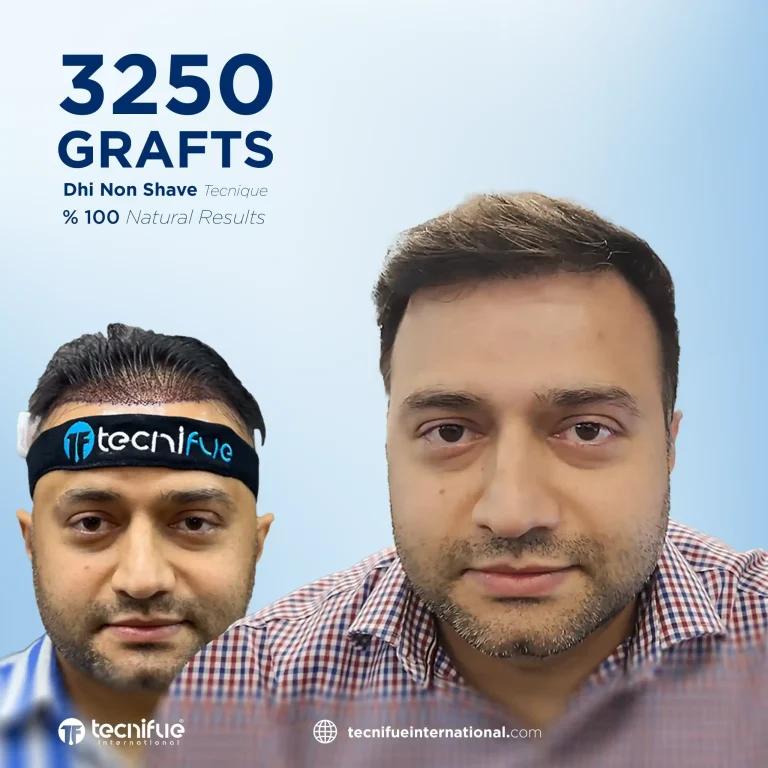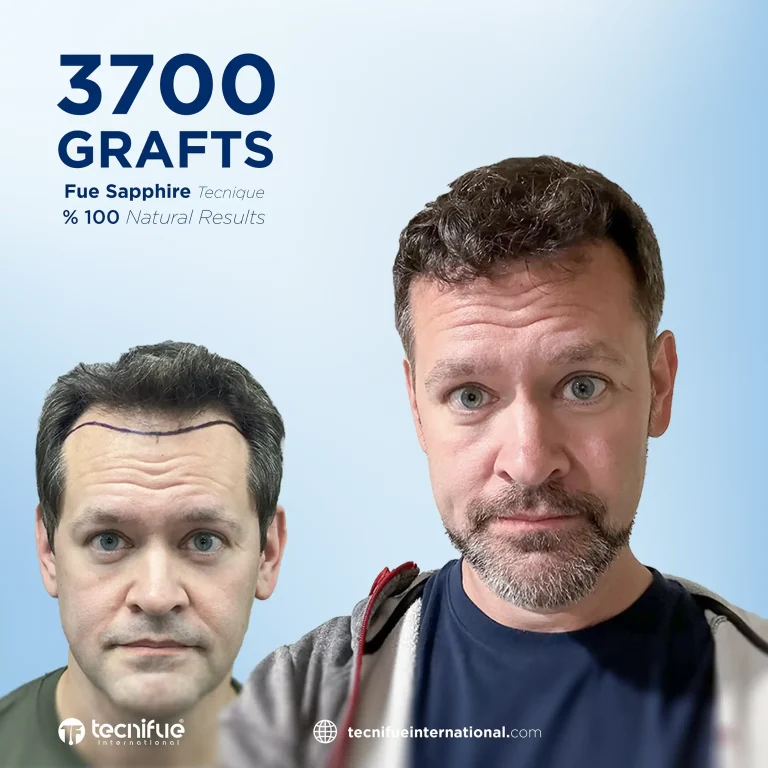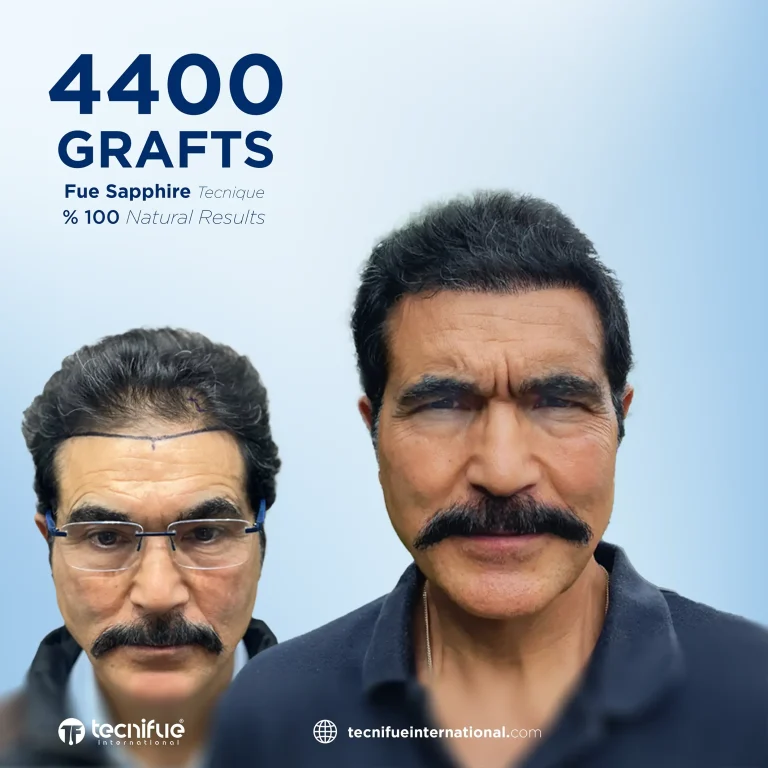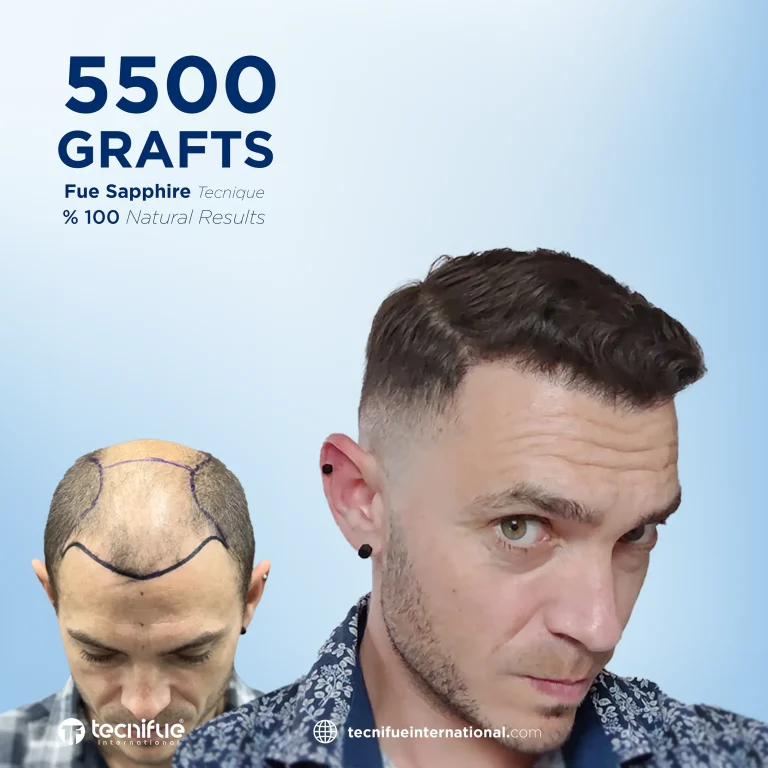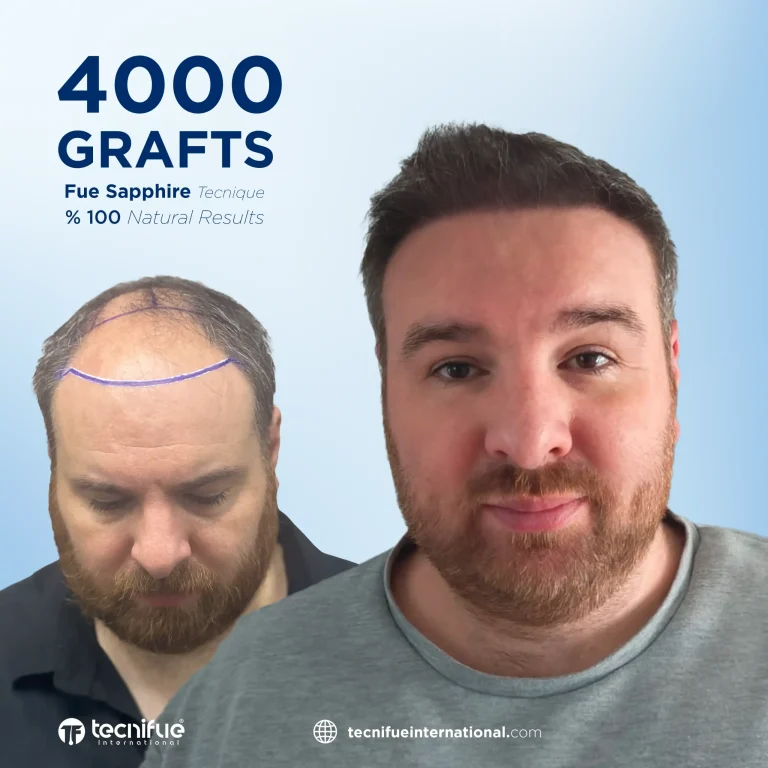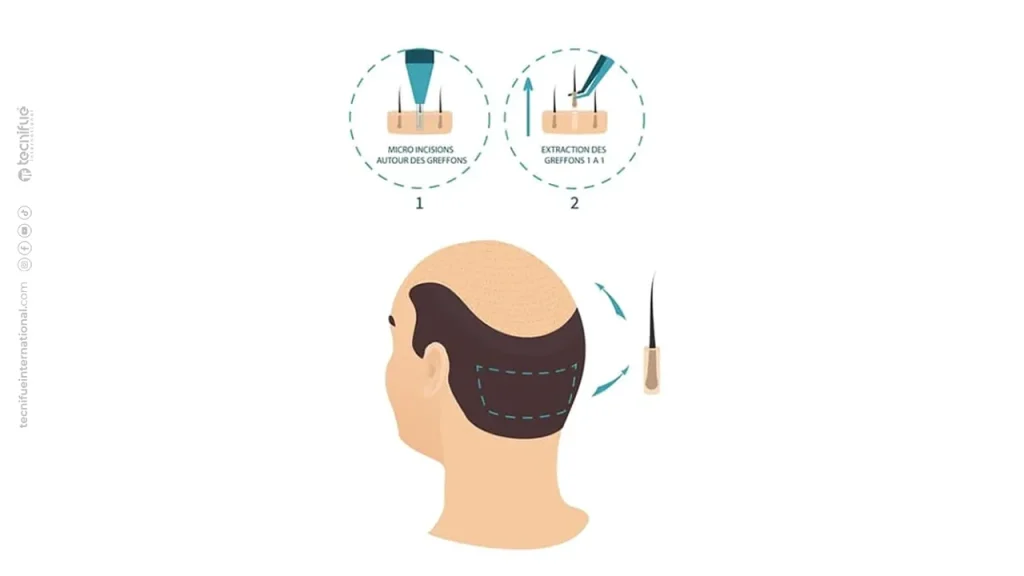Overview
ToggleFUE Hair Transplant in Turkey is a term you’ve likely come across several times if you’ve started your online research.
Our goal is to help you better understand FUE Hair Transplant in Turkey by highlighting its advantages and disadvantages.
At TecniFUE International, we put our expertise at your service to support you throughout your journey.
Our clinic is located in Istanbul, Turkey, and we welcome patients from over 27 countries, including France, Canada, and the United States.
Feel free to check out our articles, such as Medical Tourism in Turkey and Expert Tips for Hair Transplant in Turkey, to help guide your research if you are considering this procedure.
FUE Sapphire Hair Transplant Package
Patient testimonials
FUE Hair Transplant in Turkey: Why choose the TecniFUE International Clinic?
Since 2012, we have been assisting our patients with their HID hair transplant project in Turkey. Our clinic is located in Istanbul, Turkey, and we welcome patients from over 27 countries, including France, Canada and the United States.
- Surgeon and nurses experienced in FUE hair transplant.
- The best hair transplant clinics in Turkey
- Clinic just below the hotel
- Paramedics and doctors on site 24/7
- All-inclusive package including accommodation in a 5-star hotel
- An on-site French-speaking team for optimum support
- Complete follow-up before, during and after the operation for a perfect result
- Guaranteed results, with 99% of patients satisfied.



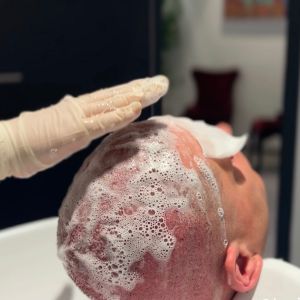
What is FUE Hair Transplant in Turkey?
FUE stands for “Follicular Unit Extraction”. In French, this translates to “extraction of follicular units”. It is primarily an extraction method.
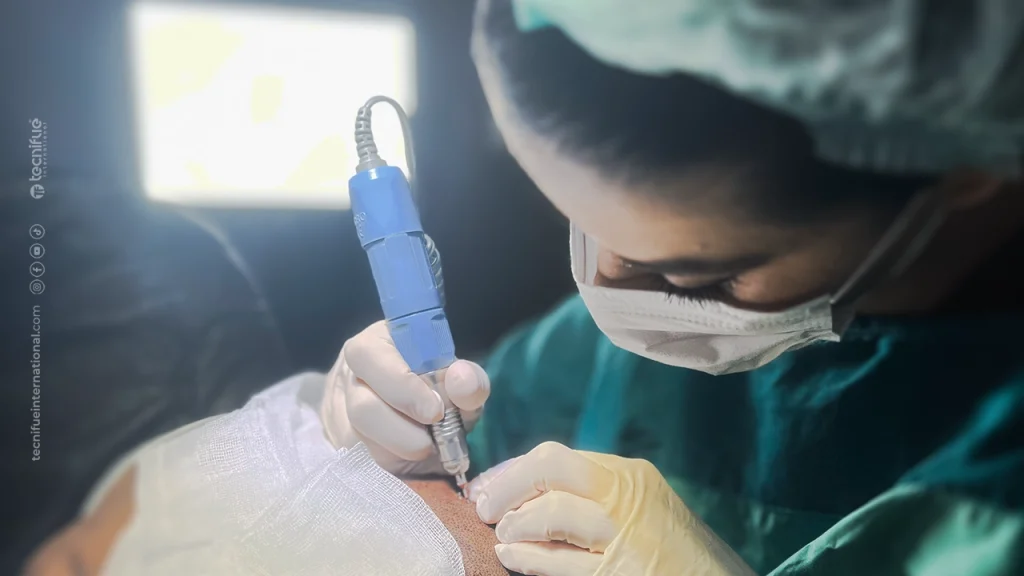
FUE Hair Transplant Extraction in Turkey
The FUE Hair Transplant procedure in Turkey consists of three steps: extraction, incisions, and implantation.
The FUE method has literally revolutionized the world of hair restoration. This method, introduced in Turkey about 20 years ago, has completely replaced the FUT (Follicular Unit Transplantation) method.
FUT, which stands for Follicular Unit Transplantation, is a very old hair transplant technique still practiced in France. It involves literally removing a strip of skin from the donor area. This method is known to leave a permanent scar on the patient.
The extraction phase of the FUE Hair Transplant in Turkey involves harvesting grafts one by one from the donor area at the back of the head, between the ears, using a motorized punch. This extraction is performed under local anesthesia. The biggest advantage of the FUE Hair Transplant in Turkey is that it does not leave a visible scar.
What are the steps of the FUE hair transplant extraction process in Turkey?
There are two extraction techniques available today: FUT and FUE. In this article, we will focus on the FUE method.
As explained above, the extraction is performed on the donor area, which corresponds to the occipital crown (temporo-occipital region).
Extraction with the FUE Method
The extraction is performed under local anesthesia. Grafts, which can contain between 1 and 4 hairs, are harvested using a motorized punch. Micro-incisions are made with a punch of the appropriate diameter based on hair type, then the grafts are carefully removed using specialized forceps and stored in a solution to preserve their quality and viability.
These harvested grafts are separated into single-hair grafts and multiple-hair grafts. To achieve a natural look, single-hair grafts are used on the hairline and temples, while multiple-hair grafts are placed in the subsequent rows.
The extraction phase for the FUE Hair Transplant in Turkey lasts between 45 minutes and 2 hours, depending on the quality of the donor area, the number of grafts to be harvested, and the condition of the scalp.
The most important factor is to use the right tools to gently extract the grafts without damaging the donor area.
What are the implantation techniques used in FUE Hair Transplant in Turkey?
FUE Hair Transplant in Turkey features two main implantation techniques:
Sapphire FUE
Classic FUE (SLIT)
With both methods, before starting the implantation, micro-channels need to be created. These incisions are made according to the natural direction of hair growth.
The surgeon’s distribution of the micro-incisions is crucial. Proper distribution will result in a good outcome.
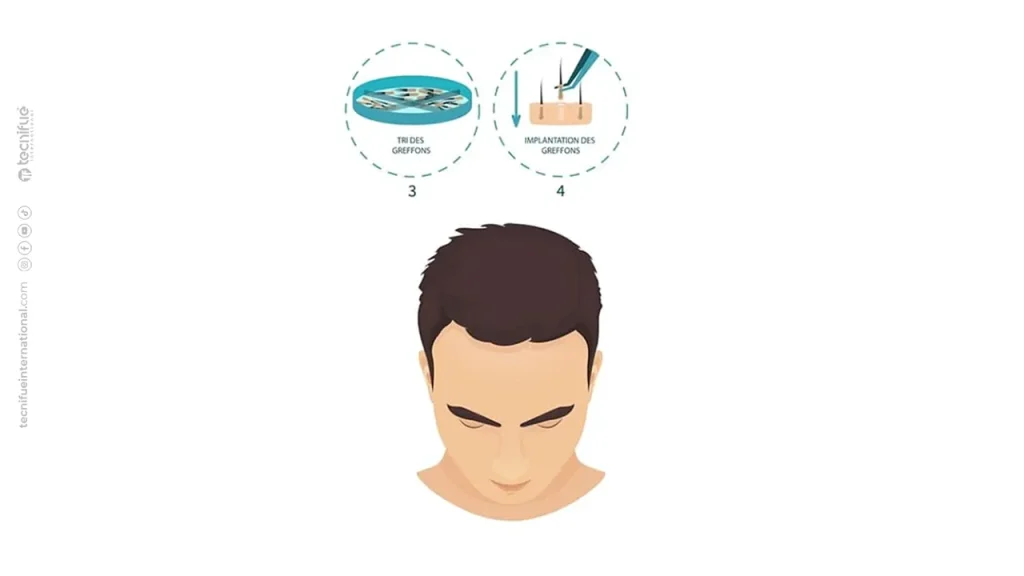
With the classic FUE method, these micro-incisions are made using sharp steel blades (Slit). These blades are U-shaped. It is a low-cost tool but lacks precision because the surgeon cuts the blades according to the thickness of the grafts, which can damage the scalp and prolong the healing time.
At TecniFUE International, this method has not been used since the clinic’s establishment. The FUE hair transplant in Turkey at TecniFUE International is performed exclusively with the Sapphire technique.
Aside from its economic advantage, the classic FUE method offers no other medical benefits.
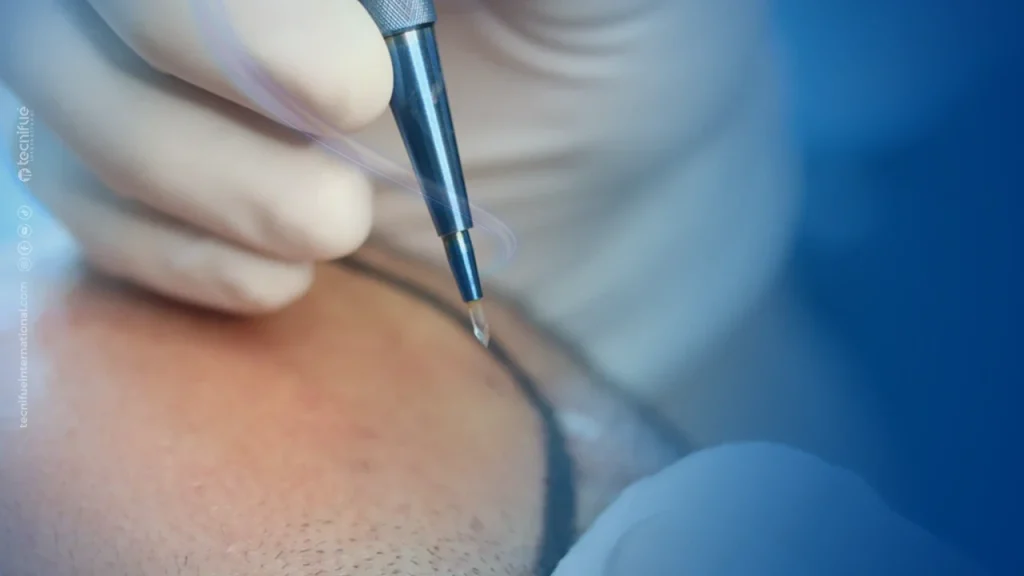
The FUE Sapphire method uses sapphire blades for micro-incisions. These sapphire blades come in various diameters, ranging from 1.0 mm to 1.6 mm.
Unlike steel blades, sapphire blades are V-shaped, allowing for more delicate incisions.
The downside of these blades is their cost, but they offer more advantages than disadvantages. The FUE Hair Transplant in Turkey using sapphire blades is much more precise than with steel blades, and the incisions are microscopic, allowing patients to heal within 2 to 3 days.
Bleeding is significantly reduced with the FUE Sapphire hair transplant.
The advantages of the FUE Technique?
Precise incisions thanks to the sapphire blade
Faster healing and less scabbing
Optimised Hair Density
Natural and uniform appearance
FAQ About FUE Hair Transplant in Turkey
It is possible that your case may require more than one procedure to achieve the best possible result.
This depends on your degree of baldness (see Medical Tourism in Turkey) and your future hair loss. Every case is unique, which is why we invite you to contact us for a free and comprehensive consultation.
About 80% of patients experience sudden hair loss 3 to 5 weeks after the procedure. Don’t worry, this is called “shock loss,” a known phenomenon that does not affect the final result.
The first results start to appear three to four months after the procedure, but to see significant results, you need to wait six to seven months.
By eight months after the operation, patients generally reach about 80% of the final result. However, the definitive outcome for the front part of the scalp appears around 12 months post-operation, and for the back of the head, it can take up to 15 months.
The procedure is performed under local anesthesia, so it does not cause any pain. The only discomfort felt is during the anesthesia, but this pain is short-lived (2-3 minutes) and of a tolerable intensity (around 4/10 on average).
Apart from headaches and some mild burning sensations, there is no significant pain after the procedure.
Technically, it is possible to harvest hair from different parts of the body to implant on the recipient area of the scalp.
Beard hair or body hair (BHT, Body Hair Transplantation) is harvested when the patient has a weak donor area.
However, this should remain the last possible option, as your body or beard hair does not have the same characteristics as your scalp hair. These hairs do not provide a natural effect, and their survival rate is much less guaranteed compared to grafts taken from the donor area.
